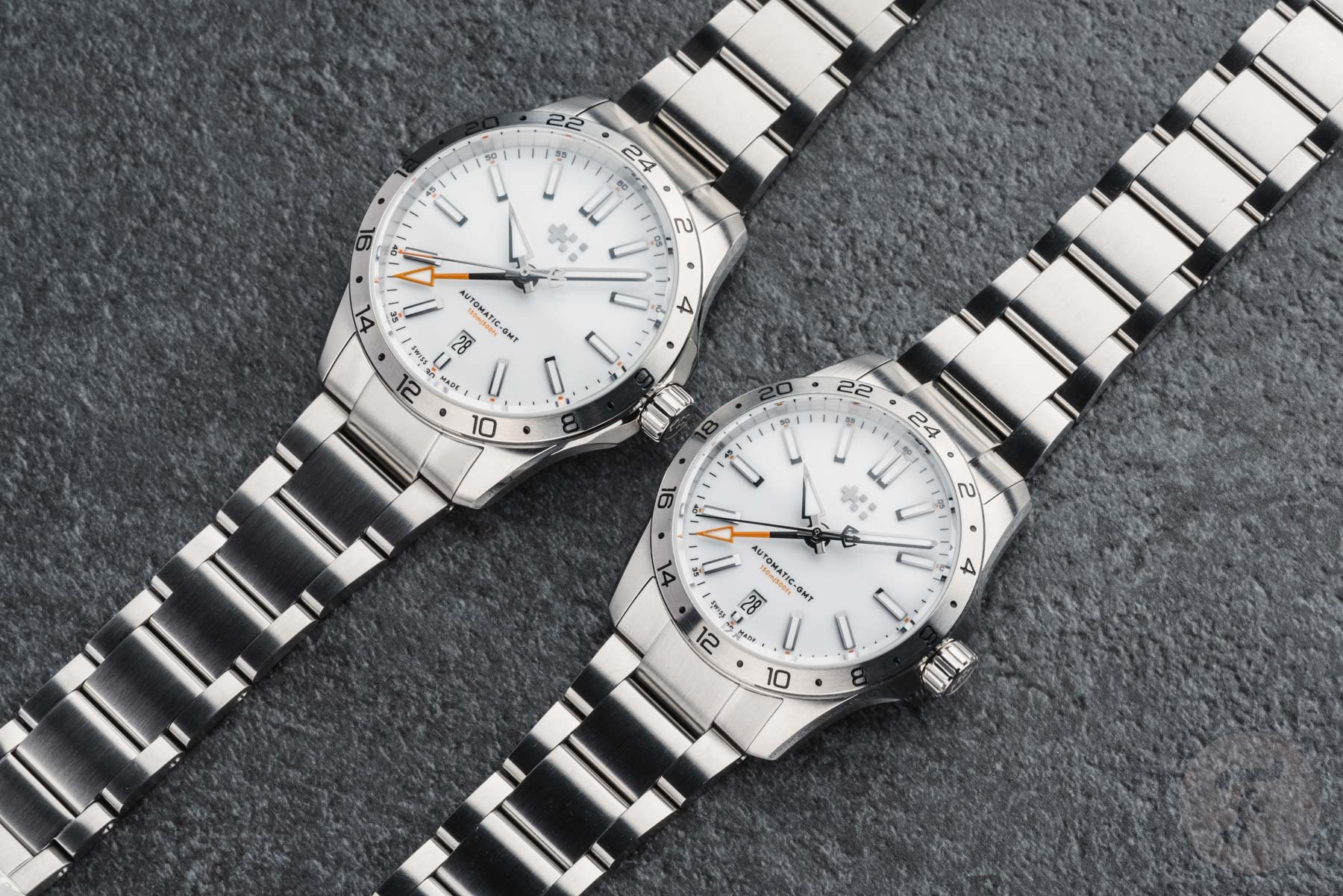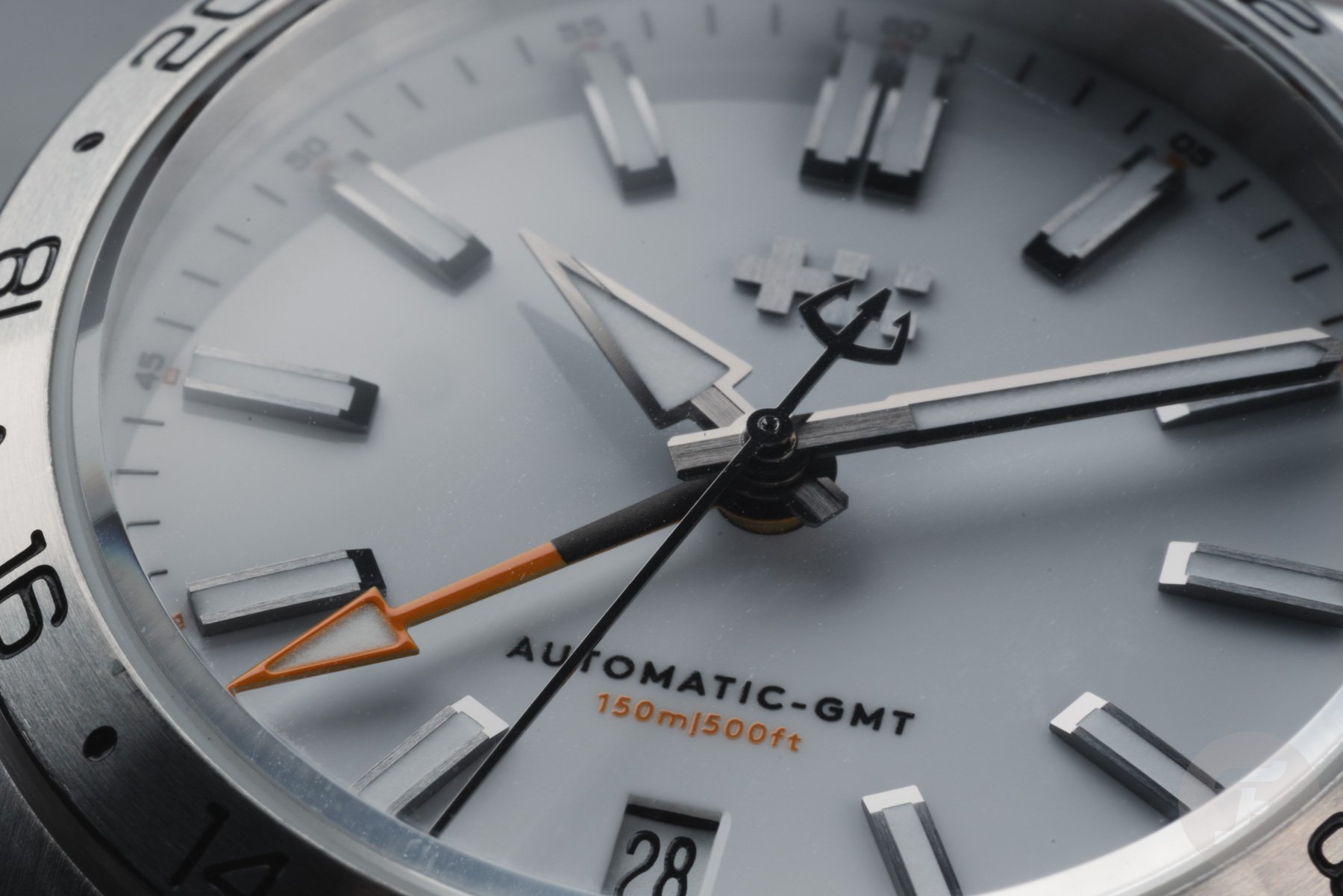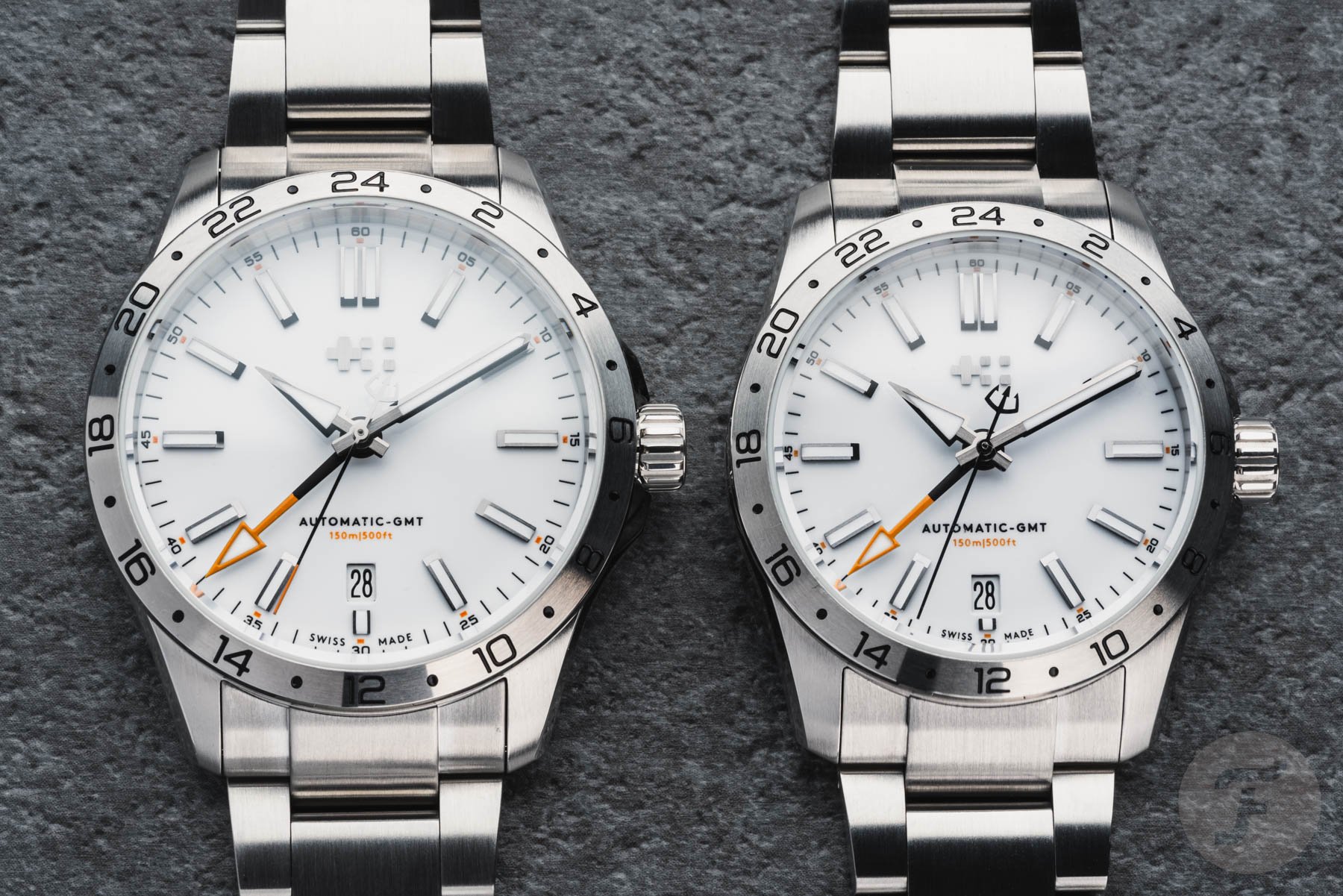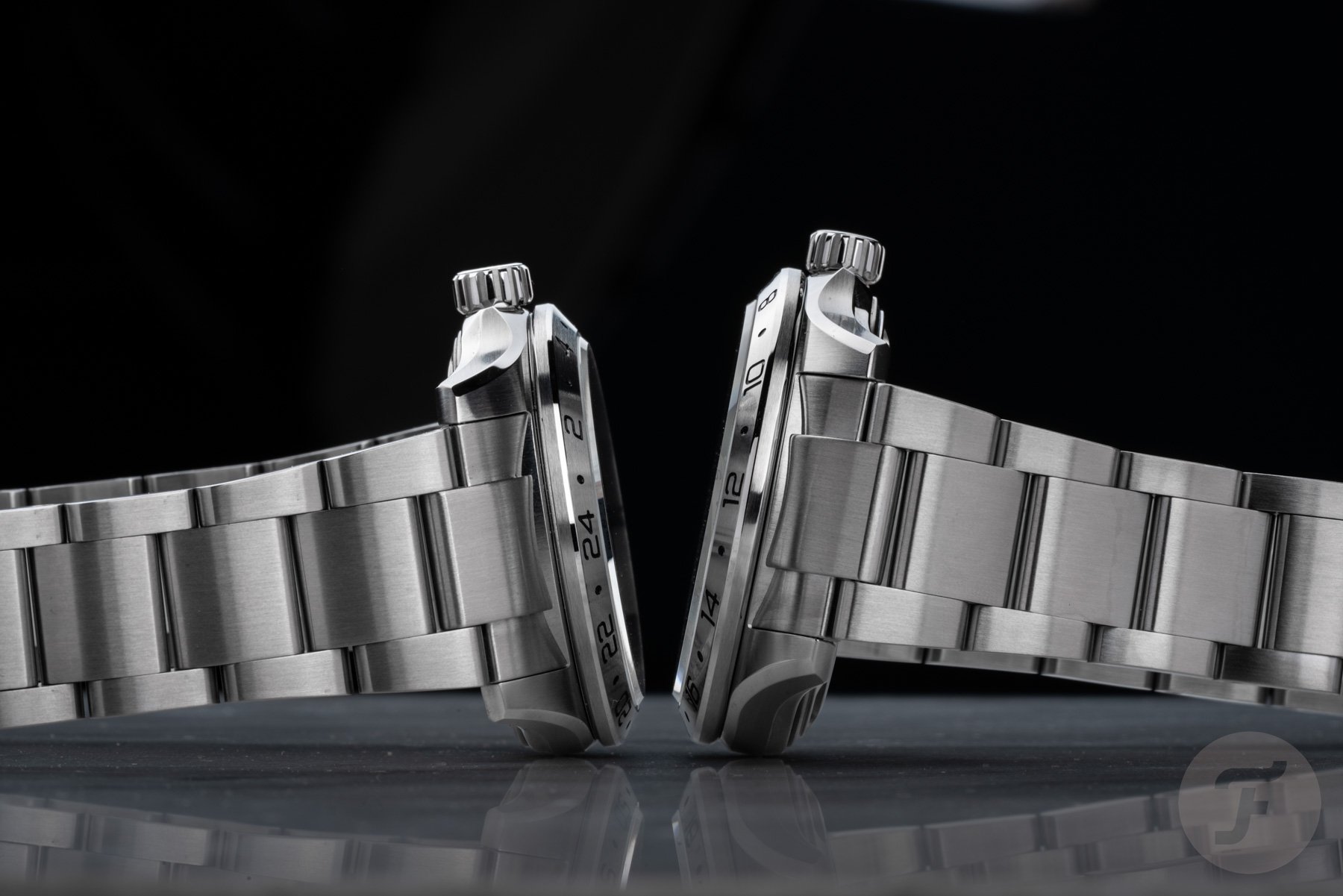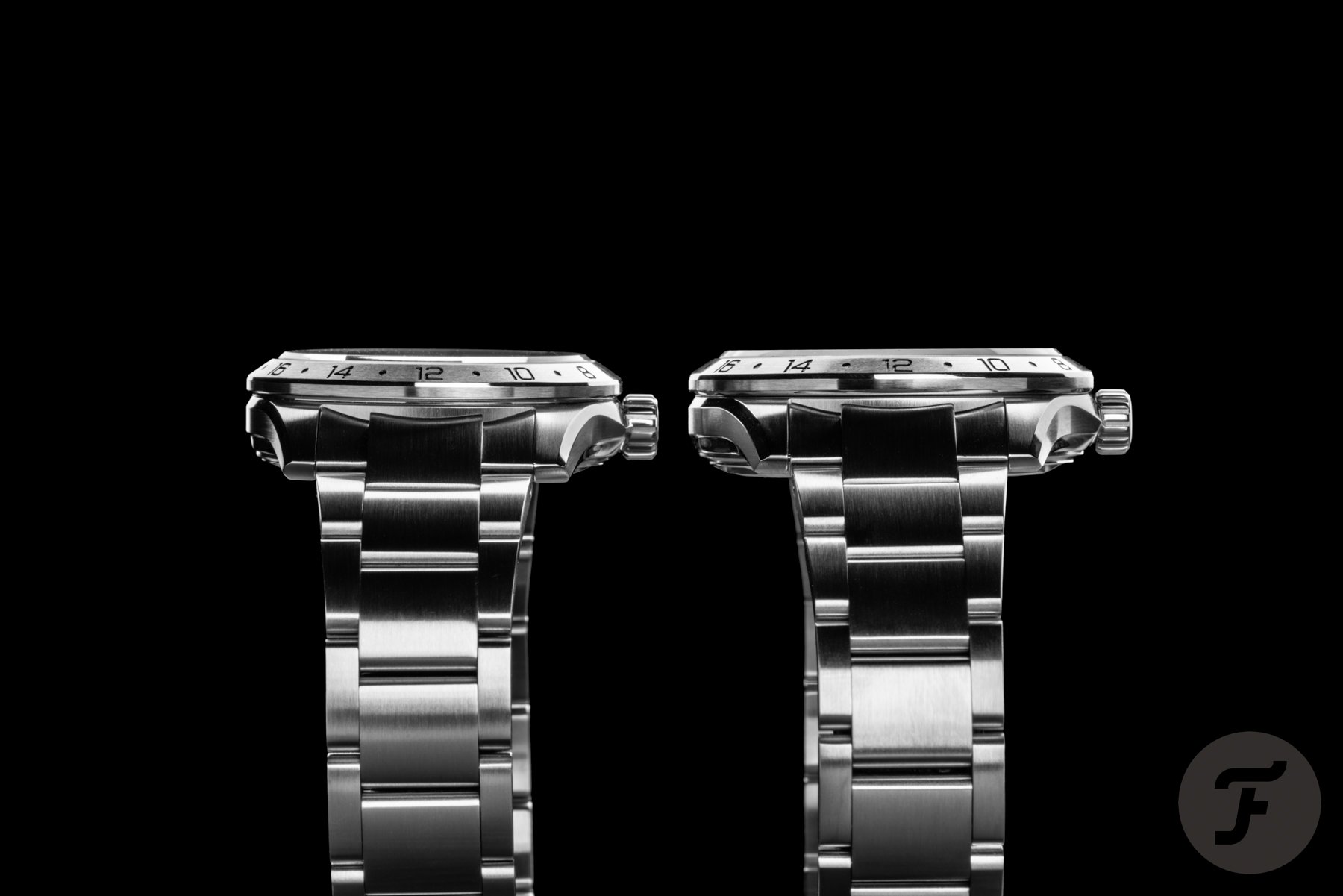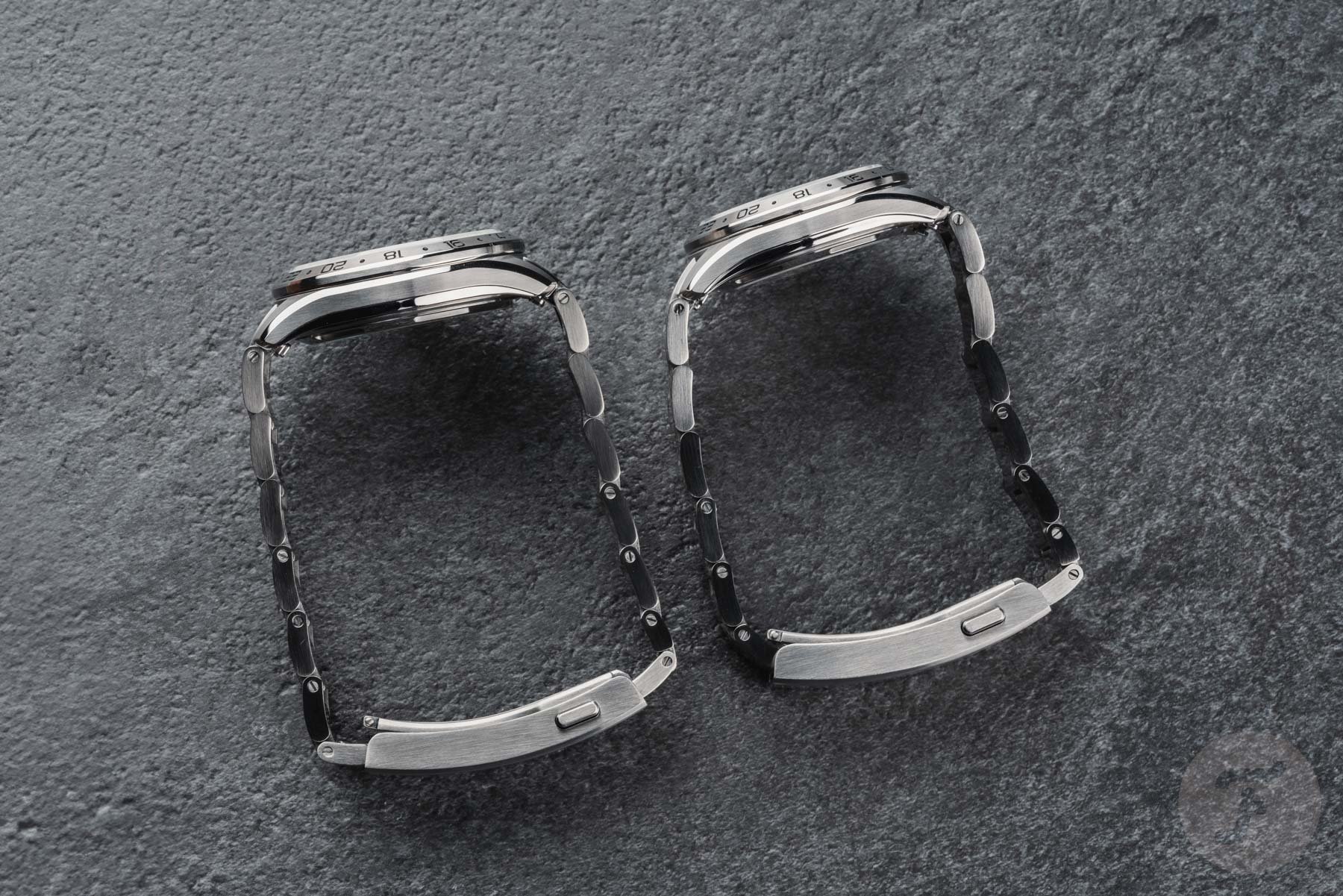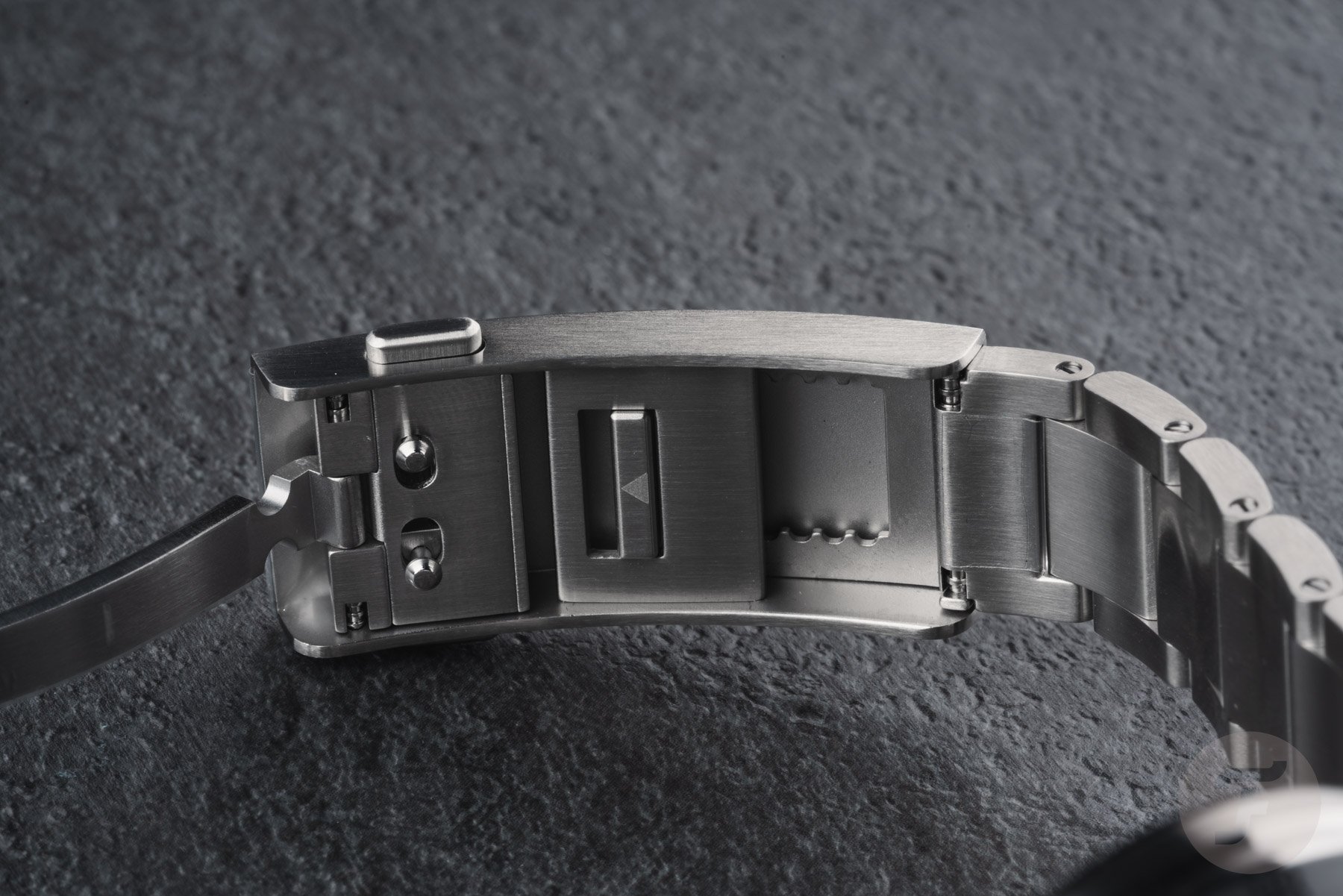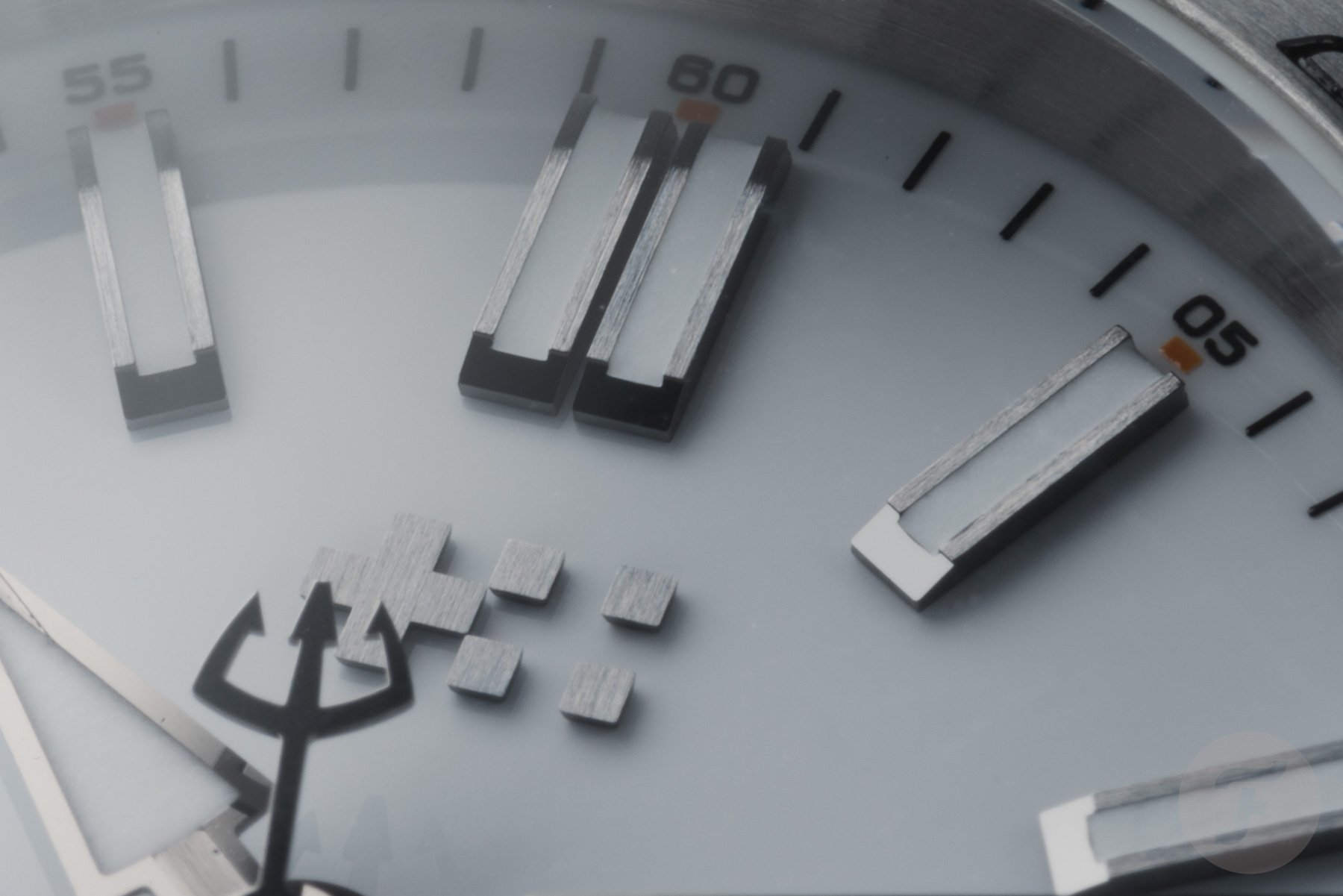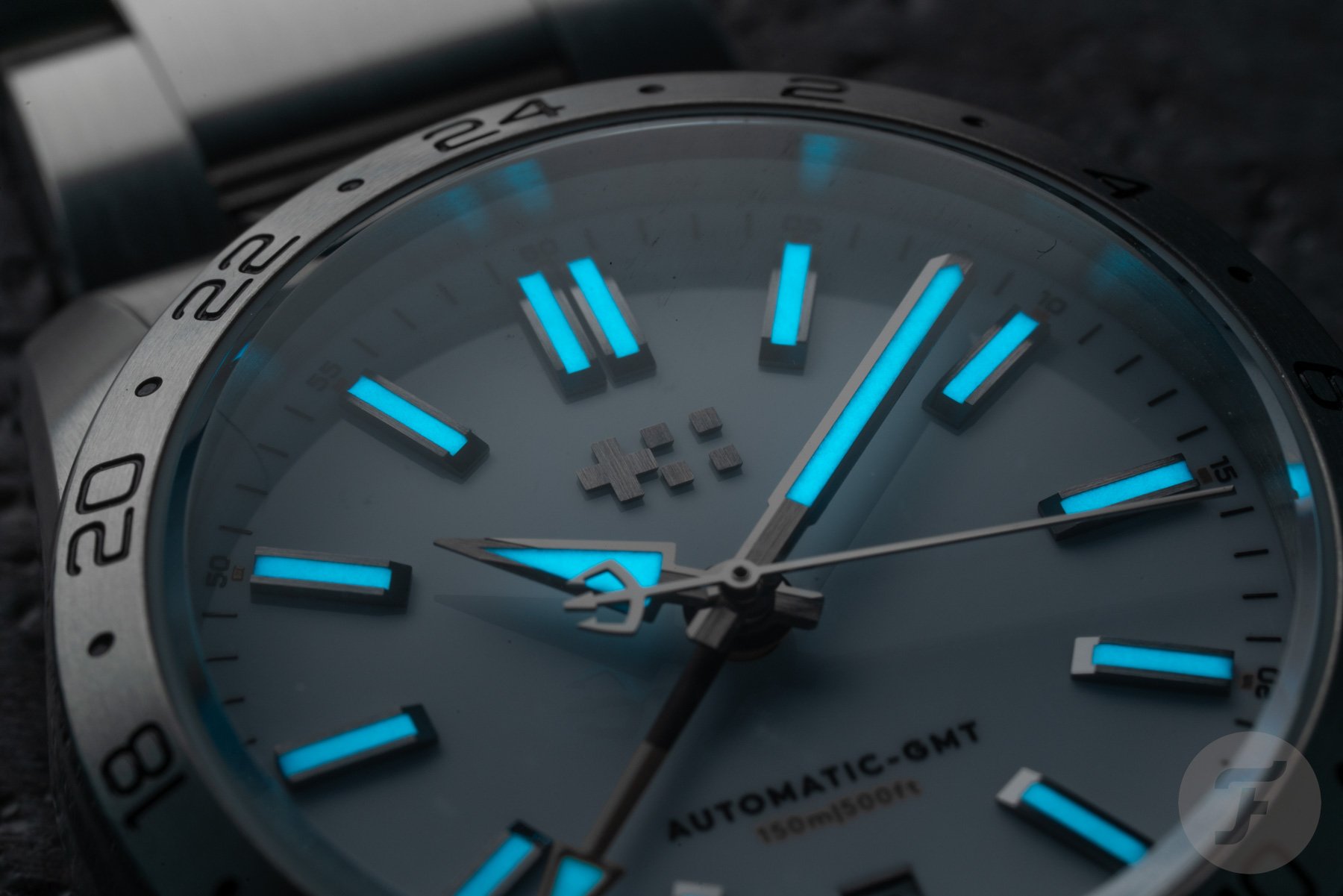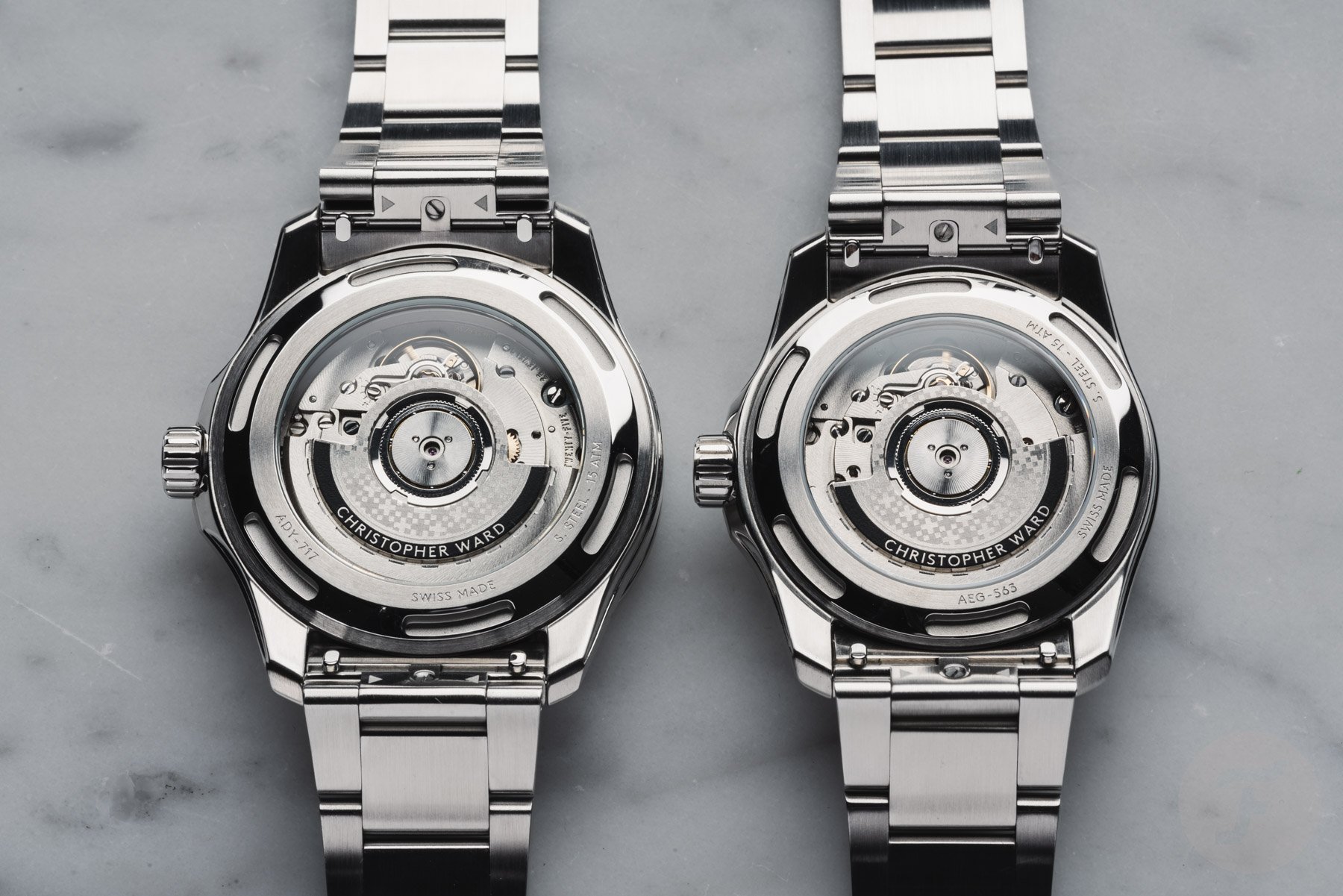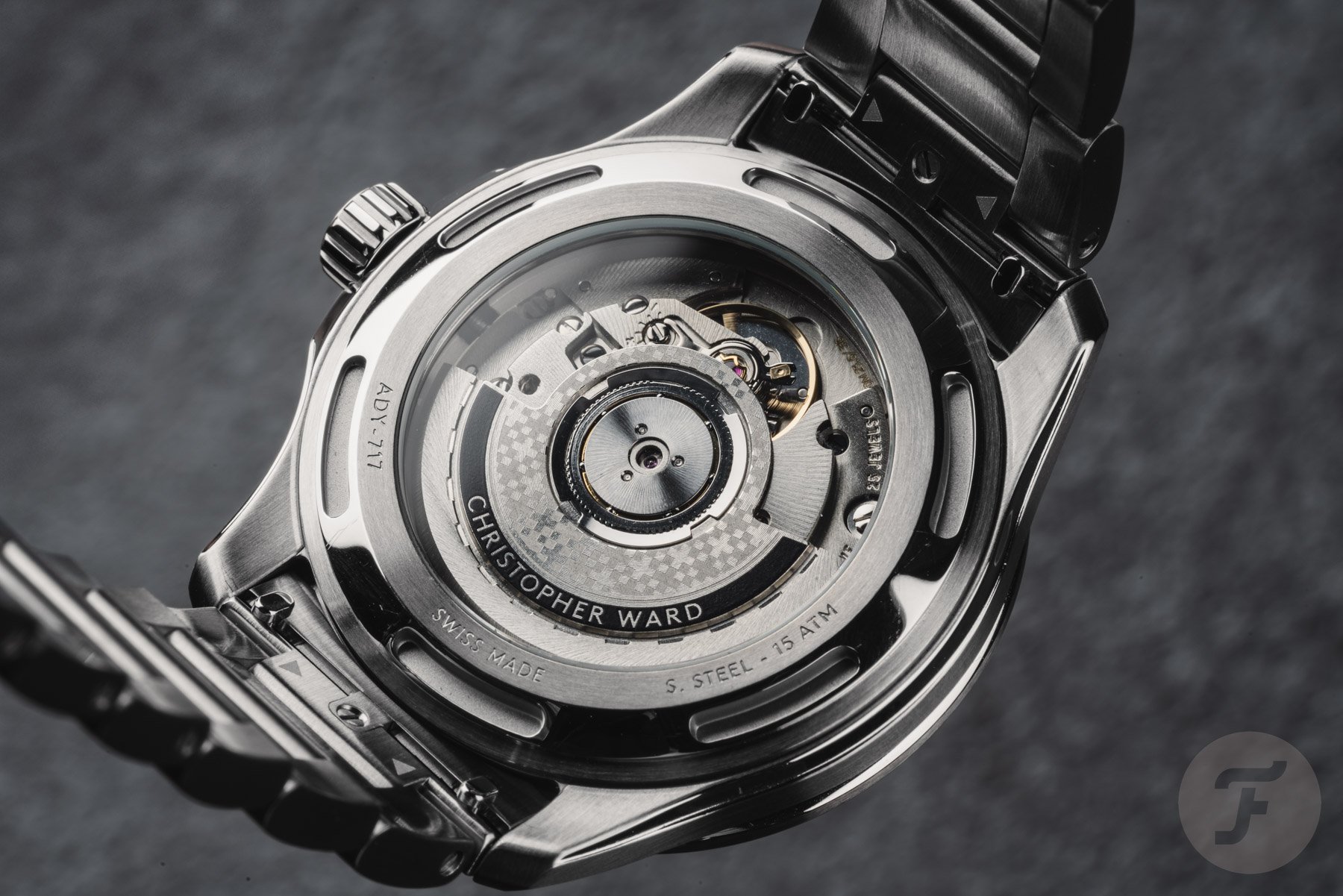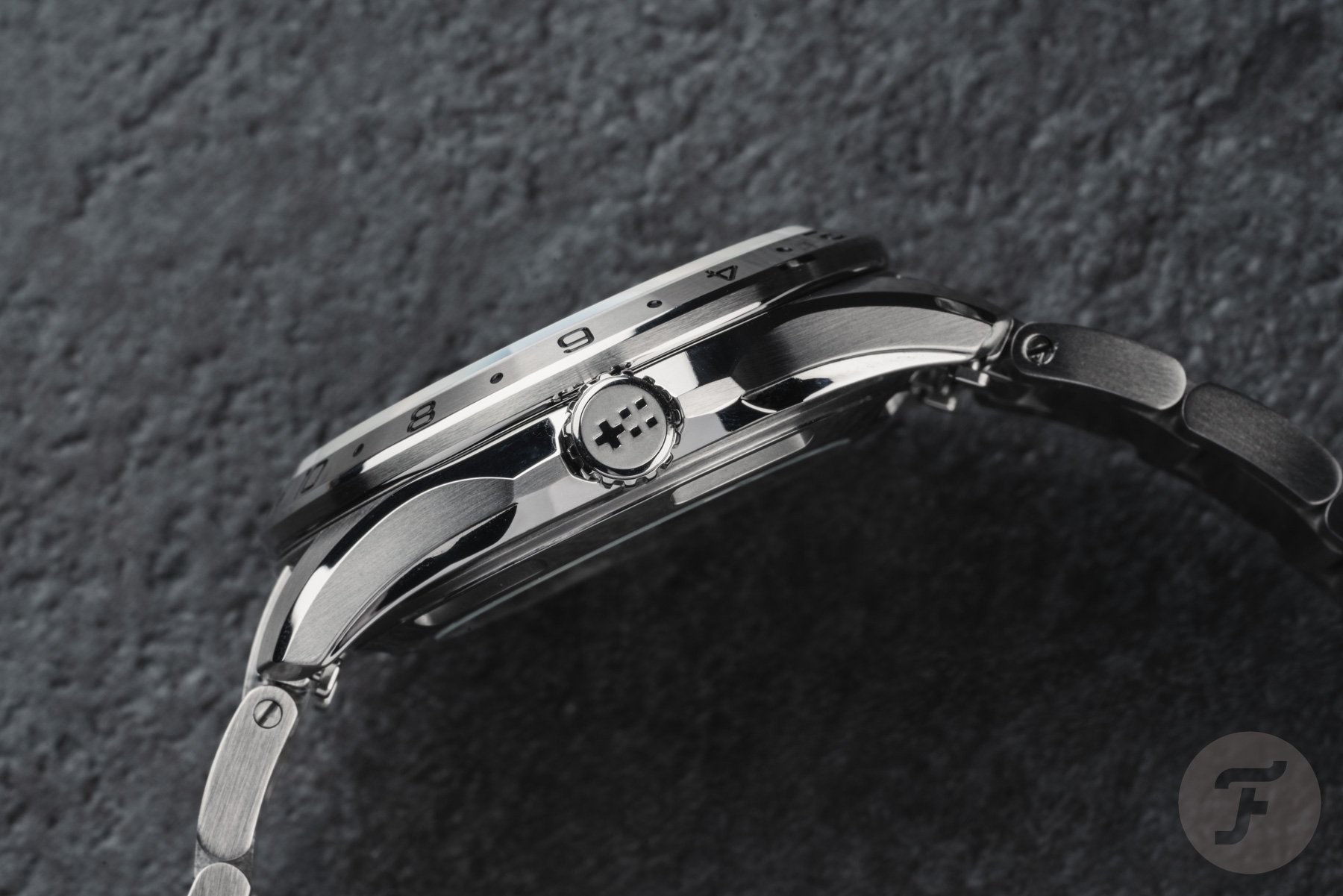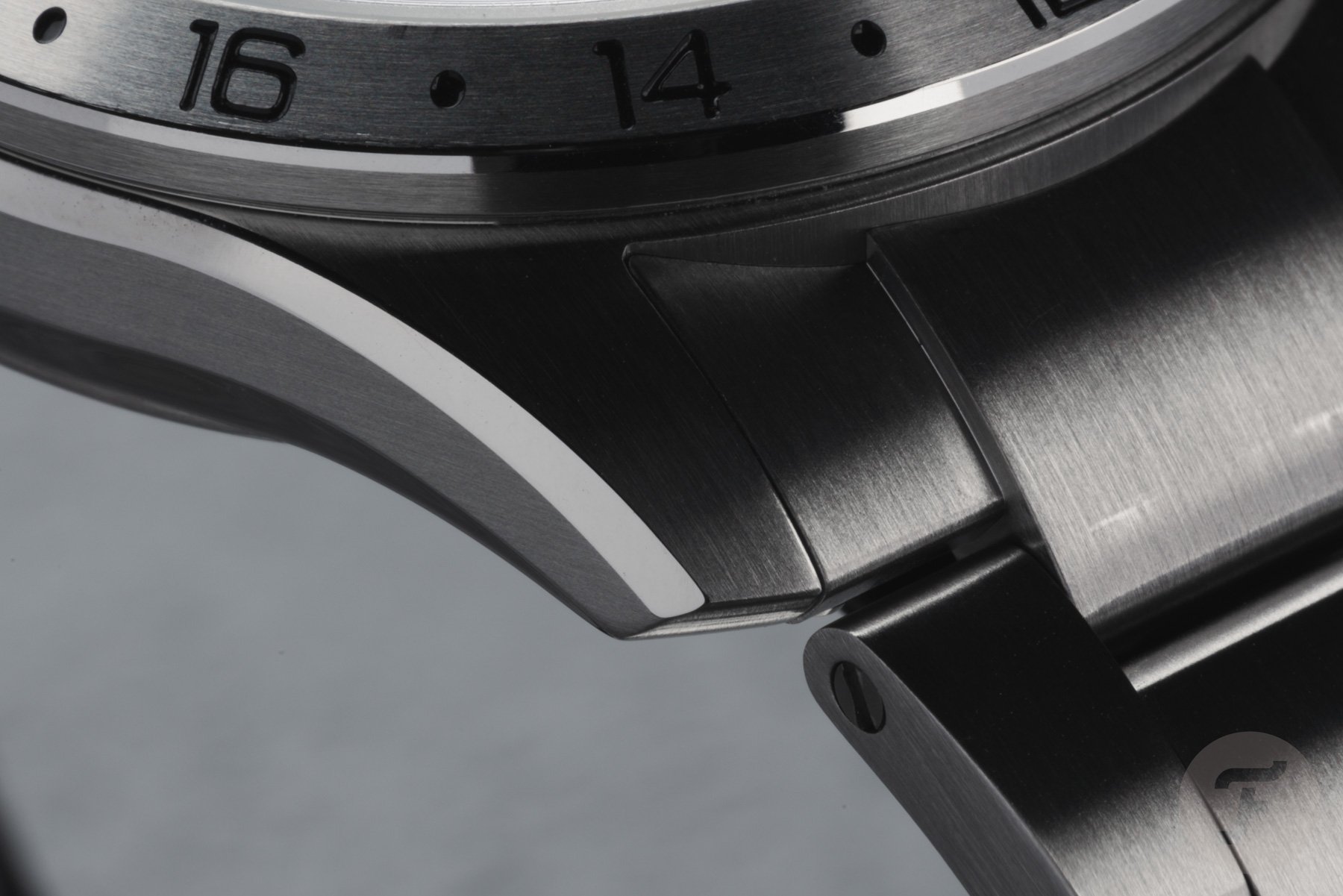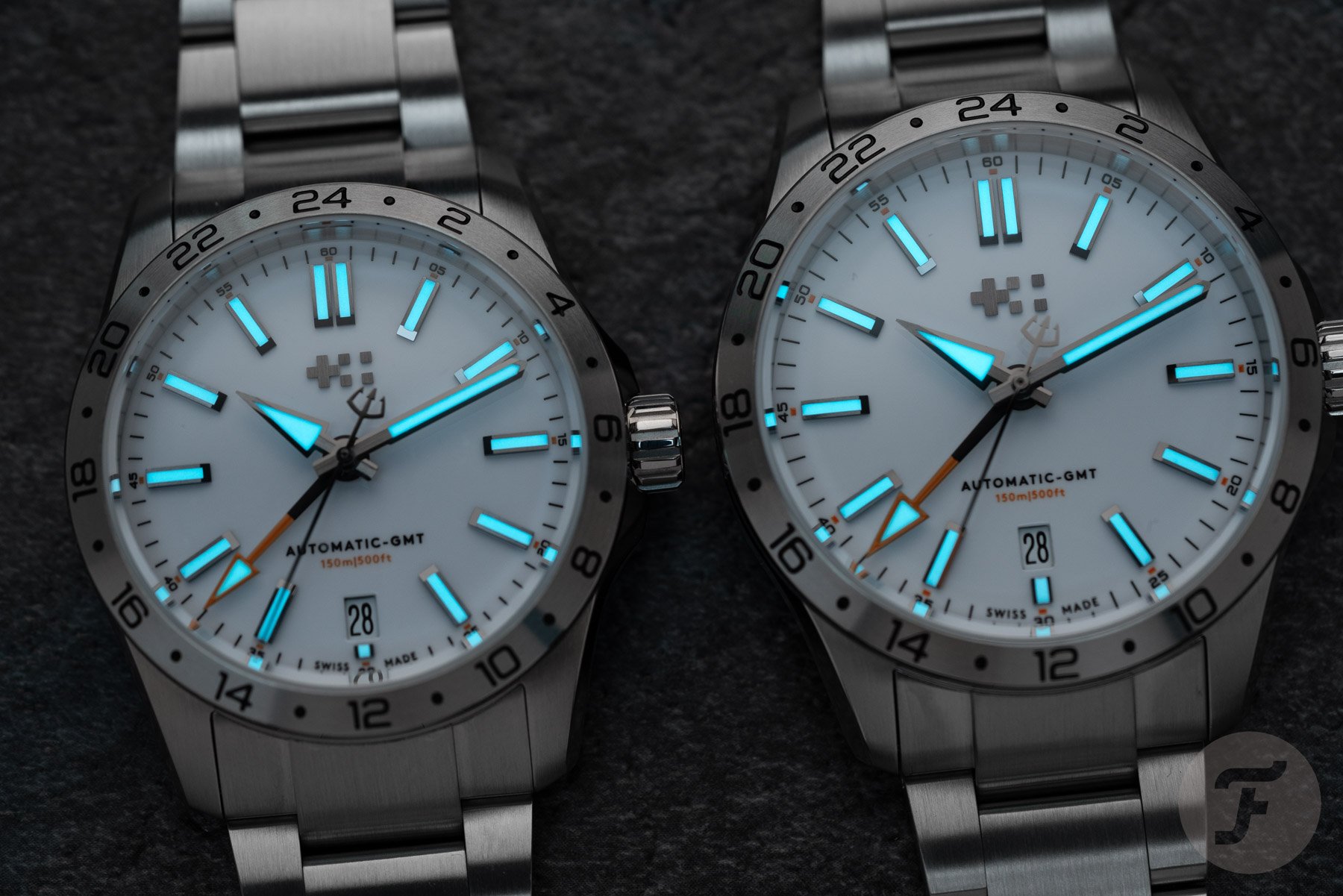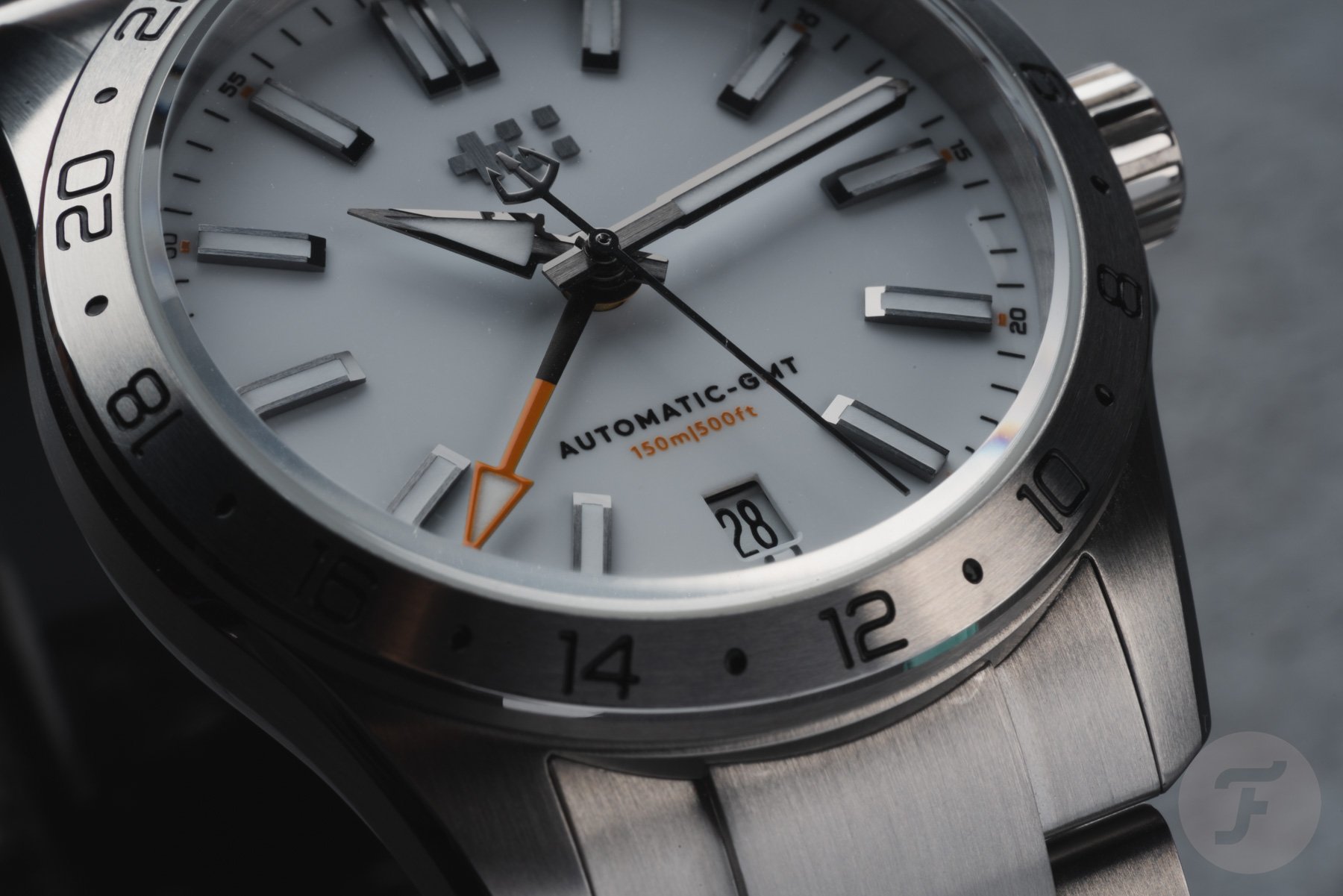A Hands-On Comparison Of The Christopher Ward C63 Sealander GMT In Two Different Sizes
By now, you are probably aware that Christopher Ward is hard to beat in terms of affordable luxury watches. One of the brand’s most popular series is the C63 Sealander, and within it, the GMT models are particularly in demand. We never reviewed the watch, so it was about time that we did. But not too long ago, Christopher Ward introduced a 36mm version in addition to the 39mm model already in the collection. For many watch fans, it raises the question of the right model for them. We decided to get both sizes in the office and create a comparative review to find out more. We quickly found out that there was no way to go wrong with either one. But is there a clear winner? Let’s find out.
Christopher Ward’s C63 Sealander GMT is one of those instantly recognizable watches. A glance will tell you that the Rolex Explorer II inspired the overall look. But zoom in a bit more, and you will find out that the designers at Christopher Ward created a watch that is rather different in its details. The clear references to the Explorer II come from the fixed stainless steel bezel and the colors of the dial and hands. However, the different execution of certain elements separates the C63 Sealander GMT from the famous silhouette it takes after. Whatever your take on this design, the fact is that the series is incredibly popular with watch fans. That’s why we wanted to find out more about the available models.
The story of the Christopher Ward C63 Sealander GMT
The 39mm model debuted in 2021. Over time, the branding on the dial has changed, but the overall design has remained the same. The brand introduced the smaller 36mm version at the beginning of this year. It’s a welcome addition to the lineup that many fans have wanted to see for a long time. As a result, you now have the choice of two sizes and three shared dial colors. The 39mm version has a fourth dial option, which we might see in the 36mm model soon.
The first two dial colors are black gloss and white gloss. The third option is the Dragonfly Blue dial. It’s an interesting blue with a sunray finish that first debuted in the 39mm version last August. The 39mm version is also available with a dark green gradient dial. Out of the available options, we picked the white-dial versions for this comparison. I usually gravitate towards black dials, but this was a nice opportunity to change things up. As it turned out, it was the right choice because these two watches drastically changed my opinion of crisp white dials. But let’s start at the beginning before we address the conclusions.
The case size and visual proportions of the C63 Sealander GMT models
Both C63 Sealander versions feature familiar C63 cases in different sizes. The 39mm model measures 45.8mm long and 11.85mm thick, whereas the case of the smaller 36mm model measures 43mm long and 11.15mm thick. As you can see, the diameter differs by 3mm and the lug-to-lug is also proportionally smaller on the 36mm model at 2.8mm. The smaller model is 0.7mm thinner, which is welcome, though it does not make a drastic difference on the wrist. Overall, the measurements and proportions make both watches perfectly suitable for various wrist sizes.
However, as we all know, numbers only tell part of the story. Ultimately, it’s all about what you see and how that comes across. The visual balance of these watches is quite different. Both models feature a slim and steeply sloping stainless steel bezel with a 24-hour GMT scale. Both bezels are equally narrow, meaning the dial size increases with the bigger case diameter. Consequently, the visual proportions change as well. Due to the balance between the bezel and the dial, several owners of the 39mm model state that it wears like a 41–42mm watch on the wrist. I didn’t find this to be the case for me, but your mileage may vary.
It’s all about visual balance
However, as I am very specific about the visual aspect, the 36mm version stood out as the better-proportioned watch of the two. The bracelet is the next element that plays a part in the overall visual aspect. We had the watches in on the brand’s Oyster-style Bader bracelet. Other options include the five-row Consort bracelet, an orange Aquaflex rubber strap, and a Camel Vintage Oak leather strap for both models. The 39mm model is also available on a black or black and orange hybrid textile/rubber strap. All the options look good, but we chose the Bader bracelet for comparison. Both case sizes have a 20mm lug spacing, so the watches’ bracelets are very similar.
However, a quick peek on the Christopher Ward website reveals a few differences between these Bader bracelets. The one for the 39mm model weighs 92 grams and comes with single-screw links and a smaller clasp. The bracelet for the 36mm version weighs 95 grams and has dual-screw links and a larger clasp, which explains why it’s slightly heavier. Both taper down nicely from 20mm to 16mm and feature a push-button deployant clasp offering toolless micro-adjustment. Additionally, thanks to the quick-release system, changing the bracelet for a strap is super easy.
We received both the 36mm and the 39mm C63 Sealander GMTs on the Bader bracelet for the 36mm model but fitted with different end links. This was specifically done for the review, but it’s good to know that the end links are different, so the bracelets are not interchangeable. I have also said in previous reviews of the C65 Dune models that the Bader bracelet is one of the best, if not the best, for the money. I have yet to find a better bracelet than the Bader bracelet at the €1,350 price point of the C63 Sealander GMT. The build quality and comfort are brilliant.
Impressively detailed and crisp white dials
But let’s get back to the impact of the bracelet on the proportions. I found that liked the 20mm lug spacing for both watches. Some Fratello team members would have preferred a narrower 19mm bracelet on the 36mm version. Honestly, though, it wouldn’t make that much of a difference, and I love the proportions as they are. So, as you would have guessed, I prefer the 36mm C63 Sealander GMT in terms of visual impact. It looks perfectly proportioned, and the balance of the slim bezel and the large white dial on the 39mm version creates a slightly different image.
Speaking of the white dials, they are super crisp and nice. Both feature applied indices that are brushed on top and polished on the sloping ends. The markers are filled with Super-LumiNova that lights up blue in the dark. Small orange dots and a 60-minute scale with numerals for every five minutes are placed on the outside of the indices. The characteristic Christopher Ward handset is executed in dark gray to nicely contrast the white dial.
The 24-hour GMT hand features a nice orange tip that corresponds with the orange text on the lower half of the dial and the orange dots outside the applied hour markers. Located at 6 o’clock, the date window has a white disc and black printing, so it fits the overall design nicely. Underneath the window, you will find a cut-off marker filled with lume, so reading the time in the dark is never a problem.
A Sellita SW330-2 inside
If you turn the watch around, you will get a good view of the Sellita SW330-2 that powers both watches. In both cases, the movement features a custom Christopher Ward-branded rotor and Sellita’s Elaboré-grade finish. The automatic movement operates at 28,800vph and has 25 jewels and a 56-hour power reserve. It’s the same caller-style GMT movement that the brand uses for the C65 Dune GMT that I own and adore.
Despite not being a more generally desirable flyer-style GMT, the caliber is known to be reliable and easy to use. After unscrewing the crown, pulling it out to the first position allows you to change the date and move the GMT hand. Pulling the crown out to the second position lets you adjust the time. The movement offers an accuracy of ±20 seconds per day, which is not spectacular. However, after three months of owning the C65 Dune GMT, I can say that the same movement in my watch is well within those margins. A check showed that the 36mm model ran slightly fast when we had them but always within a five-second margin.
Wearing the two Christopher Ward C63 Sealander GMT models
So, how do the C63 Sealander GMT’s visual proportions affect the wearing experience? A 39mm case would normally be my go-to size out of the two. However, with my preference for the proportions of the 36mm model, I was curious to find out more. At first glance, the larger model seems to fit my 19cm wrist better. But that didn’t mean the 36mm one was too small. It might be a bit too small on the straps, but the bracelet adds to the overall presence, so it fits my wrist nicely.
Thomas, who has a 17.5cm wrist, also tried out both watches, and the smaller one did seem more at home on his wrist. That’s why I initially wore the 39mm version more. However, as soon as I started changing things up, I felt the 36mm version also suited my wrist well. It might seem a tad small for someone looking at my wrist, but I quickly fell in love with the look of the smaller version.
A matter of personal preference
For Thomas, the choice was easy. He has the smaller wrist of the two of us, and the 36mm model looked right at home on his wrist, whereas the 39mm version looked too big in comparison. While a 39mm watch is far from too large on Thomas’s wrist, the visual proportions of this one make it seem bigger, especially with a crisp white dial. The light color seems to magnify the effect of the dial size.
That might also be why the 36mm version didn’t feel too small on my wrist. It has a presence that demands attention. In the end, the combination of the visual proportions and the great fit on my wrist made me wear the 36mm C63 Sealander GMT more than its larger brother. What both models have in common is that they are super comfortable watches with nicely sculpted cases and plenty of allure. The finish of both watches is predominately brushed, but the polished chamfers on the case and the bezel bring exactly the right amount of visual zing to these two timepieces.
Final thoughts on the Christopher Ward C63 Sealander GMT models
Overall, I was super impressed by the two C63 Sealander GMT models. Regardless of your size preference, both watches have a lot to offer. They make perfect, stylish daily wearers that stand out because of their incredible quality and great attention to detail. The design, the build quality, the finishing, and the great comfort are hard to beat at this price point. The 36mm version is available for €1,350, and the 39mm version is slightly more expensive at €1,365 on the Bader bracelet. But you can also buy a C63 Sealander GMT for €1,165 on one of the available strap options.
After spending two weeks with both watches, I completely understand what makes the C63 Sealander GMT popular in the Christopher Ward collection. While I have grown to love the smaller 36mm version, it doesn’t mean it’s the better watch. I do think the overall proportions are better on the smaller version of the two. But even that is subject to personal preference. It would be best to choose a watch you like; in that process, there is no objective right or wrong with these two watches. Besides how well made they are (which is not exactly news), I learned how much I’ve grown to love a 36mm white-dial GMT. Had you told me that would happen before this hands-on experience, I would have smiled without believing it. Now, though, it is on my list of future wants.
For more information on these two Christopher Ward C63 Sealander GMT models, visit the official Christopher Ward website. In the comments section, let us know which of the two you prefer.

